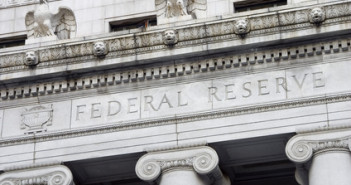Yesterday marked an unexpectedly dull day for capital markets, as the equity exuberance which materialized after the prepared remarks from Bernanke’s testimony in Washington failed to gain traction and faded into the close. The Q&A session Bernanke had with Congress after his speech did little to spark market volatility, with risk sentiment weakening across the board which allowed the USD to retrace its earlier losses and end the day slightly higher.
There was not a lot contained within Bernanke’s address to the House Financial Services Committee that investors haven’t seen/heard before, with the Fed chairman essentially just reiterating the Fed’s highly accommodative monetary policy will continue in the foreseeable future, and that the prospect of tapering will still be based on incoming economic data unfolding in line with what the Fed has forecast.
Part two of Bernanke’s testimony to Congress continues today at the Senate Banking Committee, but as his prepared testimony will be the same, the only potential for new information will be in the Q&A.
The overnight Asian session saw mixed trading following Chinese government data which showed home prices in China climbed in 69 out of 70 cities. The Shanghai Composite traded heavy throughout the session as worries that another round of property curbs might be brought forward by the government in order to cool the frothy housing market, causing the index to shed 1.05%. Weakness was also seen in the yen overnight, with USDJPY regaining the 100 level ahead of upper house elections in Japan on Sunday that would strengthen the Prime Minister’s position and ability to push through expansionary economic reforms.
Across the Atlantic we’re seeing the major bourses timidly in the green as we approach the North American cross. Mild risk appetite has been buoyed by the passing of a Greek bill that includes a package of reforms to increase austerity by cutting additional public employees. The bill needed to be ratified for the Troika to sign off on the next disbursement of Greece’s aid, but was just narrowly passed by a vote of 153 for to 140 against. The Spanish treasury also managed to get its bond auction away and raised more than its official target maximum as borrowing costs fell. Despite the moderately positive equity performance, the EUR is languishing and is currently offered below the 1.3100 handle against the USD.
Performance in Cable was weak during the overnight session, but managed to get a lift to try and bring GBPUSD back to unchanged after a retail sales print came in higher than expected on a y/o/y basis. Clearance sales and promotions enticed consumer spending over the month of June, and helped sales at non-specialized stores grow at the fastest rate since March 2012. The pound is still trading with a slight offered tone, but off the lows against the big dollar and trying to retain the 1.5200 level.
As we head into the North American open, US equity futures are garnering some interest from the bulls, although it is hard to tell who will gain control as the opening bell rings. Weekly jobless claims for the US came in at 334k, approximately 11k better than had been expected heading into the release. The spread between Brent and WTI continues to narrow this morning, with the light-sweet crude ramping over the last hour and making a charge at $107/barrel.
Turning our attention to Canada, wholesale trade numbers for the month of May beat expectations with a monthly increase of 2.3%. Economists had been expecting to see only a slight increase from April at 0.3%, and while the stronger than forecast reading has attracted some Loonie bids, USDCAD is still modestly stronger from yesterday’s close. The pair was contained to a tight 40point range overnight, with traders likely waiting for tomorrow’s tier 1 data for further direction.
Sticking with the Loonie; tomorrow will bring consumer price data for the Canadian economy during the month of June, which will be held with a little more prominence now that the Bank of Canada has specifically laid out the three conditions which warrant the current level of considerable monetary policy stimulus. Yesterday’s rate statement was interpreted by traders as taking a slightly dovish stance, with the central bank declaring that the muted outlook for inflation, the significant slack in the Canadian economy, and the constructive development of imbalances in the household sector all confirmed that the current level of monetary policy accommodation remained appropriate. The bank cited that growth in China and other emerging markets would weight on the global growth outlook, slightly downgrading its domestic GDP forecast for 2014. Even with the slightly dovish posture, Governor Poloz did say that if economic conditions developed in line with the bank’s forecast, the normalization of interest rates would see the next rate movement be of the upward variety, although this would also need to be consistent with achieving the bank’s 2% inflation target. All in all the statement was fairly consistent with what investors have heard from Poloz’s predecessor in the past, although a little more specific in regards to the factors affecting its rate decision.
Expectations for consumer prices are that we see the core reading tick up slightly on a y/o/y basis, but continue to sit along the bottom band of the BoC’s target range. A warmer than expected reading would bolster demand for the Loonie, even though it will most likely take some time for the normalization of inflation to evolve to a point where the BoC looks to increase interest rates to combat higher consumer prices, with the central bank not seeing core inflation rise to its target of 2% until the middle of 2015.
Further reading: US jobless claims drop to 334K – dollar rising,
EUR/USD July 18 – Limited Losses as Bernanke Puts QE Tapering on Hold



